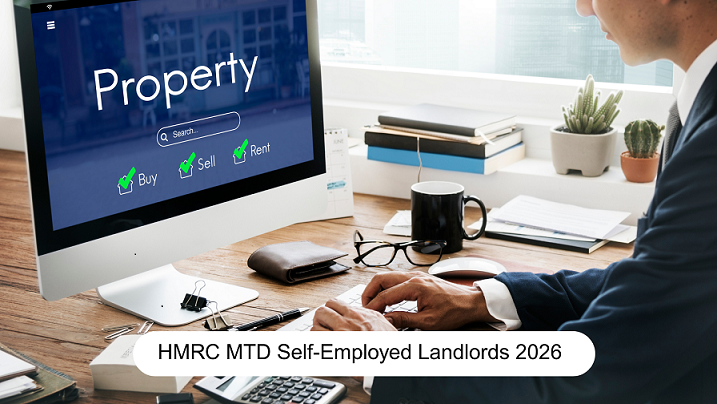
If you are a landlord or self-employed person earning over £50,000 a year from your property or business, big changes are coming to how you manage your tax.
From April 2026, HMRC will require you to use Making Tax Digital (MTD) to keep records and report your income. This means no more annual paper tax returns; now you will submit updates digitally every quarter using special software.
This blog will guide you through what HMRC MTD for self-employed landlords 2026 means for you and how to get ready.
Making Tax Digital (MTD) is a government initiative aimed at modernising tax reporting. Instead of paper forms, taxpayers keep digital records. They send their income and expenses updates to HMRC online quarterly.
This helps reduce errors and makes taxes more transparent. MTD has been applied to VAT since 2019 and is now being rolled out for income tax from April 2026.
From 6 April 2026, self-employed landlords with a combined gross income above £50,000 from property letting and self-employment must join MTD. This means:
If your qualifying income is below £50,000, MTD is not mandatory in 2026. However, from April 2027, the threshold lowers to £30,000, and from April 2028, it lowers to £20,000.
Qualifying income refers to the total amount you earn before deducting any expenses from specific income sources. It’s used to determine whether you need to sign up for Making Tax Digital (MTD) for Income Tax.
Qualifying income includes your total income before expenses from:
For example, if you earn £35,000 in rent and £20,000 from self-employment, your total qualifying income is £55,000. You will need to join MTD in 2026.
If you have multiple income streams, you must include all of them to determine your total qualifying income.
The main goals of HMRC Making Tax Digital are:
This new system replaces the old annual Self Assessment tax returns with more frequent digital updates.
Under MTD, landlords are required to submit quarterly updates of digital records to HMRC. The software reports income and expenses regularly throughout the year.
Timeline for MTD for Landlords:
|
Date |
Income Threshold for Mandatory MTD |
|
6 April 2026 |
£50,000+ qualifying income |
|
6 April 2027 |
£30,000+ qualifying income |
|
6 April 2028 |
£20,000+ qualifying income |
You will submit two quarterly updates for each quarter: one for UK property and one for overseas property income, if applicable.
You must use MTD-compatible software to keep digital records and submit updates. Some software options are available:
Your software must be able to:
You can use more than one software if needed, but they must work together to meet MTD requirements.
Alongside MTD, HMRC has made other changes that affect self-employed landlords:
To be ready for 2026, landlords should:
Though MTD adds new requirements, it also offers advantages:
HMRC MTD for self-employed landlords from 2026 marks a big change. By requiring digital record-keeping and quarterly reporting, taxes become more modern, transparent, and accurate.
Landlords should prepare early to avoid surprises. With good planning, MTD can enhance your tax management and even help your property business operate more efficiently. Start preparing today to meet HMRC's MTD self-employed landlord requirements for 2026 with confidence.
PHS Associates helps self-employed landlords by guiding them through HMRC Making Tax Digital requirements, offering customised advice, support with MTD software, and ensuring compliance for 2026. Contact us at 0208 8611685 and email us at info@phs-uk.co.uk.